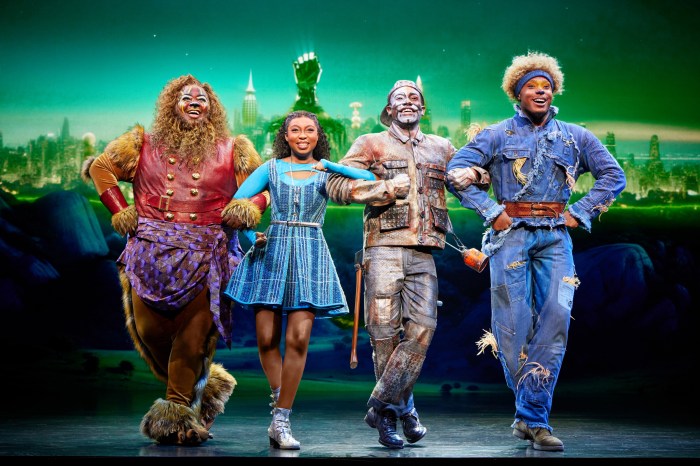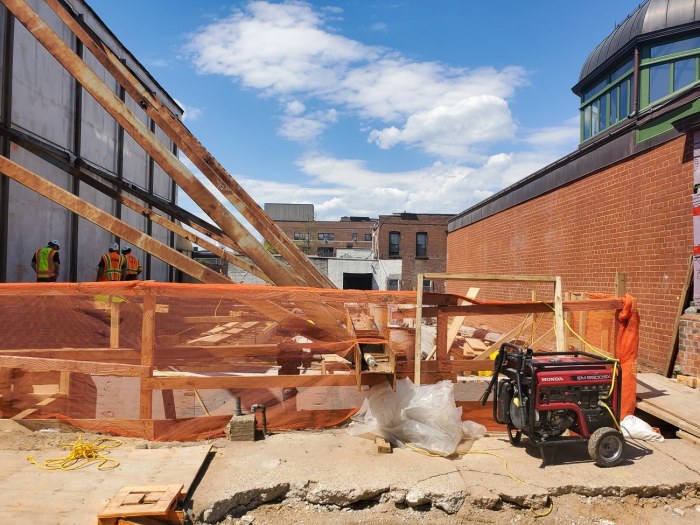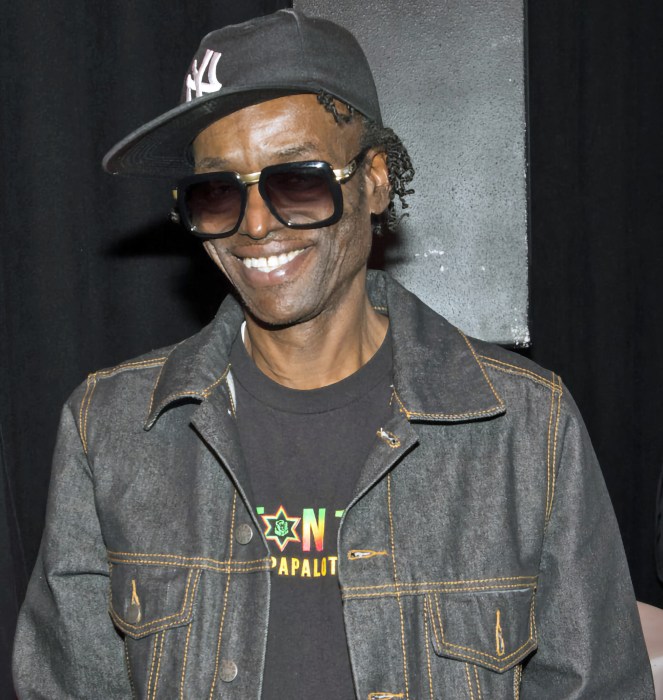John Sorensen-Jolink and Carlye Eckert. | RACHAEL SHANE
The sanctuary of Judson Church stands in for the ocean where collaborating dancers and choreographers Eckert+SorensenJolink found themselves adrift in “RescYou,” performed January 17-19. The subtitle, “Stranded on a life raft in a vast ocean beyond time,” is unnecessary, imposing a narrative specificity that the movement imagery of the 50-minute abstract duet transcends. The audience rings the sanctuary, watching from every angle, and our spatial distance, close or far, from any given passage determines what it “means” at that moment.
Eckert+SorensenJolink's impressive first evening-length dance
As Judson artists in residence, John Sorensen-Jolink (who, full disclosure, was a student of mine a decade ago at NYU/ Tisch) and Carlye Eckert, a Juilliard School graduate, both Portland, Oregon, natives, produce curated evenings at the church of choreography and food – “STUFFED: Dinner and Dance at Bailout Theater.” Eckert has performed with numerous contemporary choreographers, including Jonah Bokaer and Larry Keigwin. Sorensen-Jolink has performed in “Sleep No More,” toured with Twyla Tharp’s “Movin’ Out,” and is currently in the new iteration of the Wilson-Glass-Child opera “Einstein on the Beach.”
“RescYou” –– the first evening-length dance by the pair –– is a personal essay, revealing the kinetic individualities and artistic compatibilities of its creators. It avoids many of the pitfalls young dance makers encounter in their initial attempts to maintain audience interest for nearly an hour. They manage to keep redundancy to a minimum and maintain forward momentum.
It’s hard to discern the division of labor, though the solos by each presumably represent their own personal choices. At six-feet-plus, red-haired Sorensen-Jolink is the more visually compelling figure when they’re moving together. But Eckert, on her own, has a quiet power that rivals his. They make refreshingly personal movement choices, and both perform with disarming sincerity and lack of affectation.
They begin, standing on the altar, looking out at the horizon, shifting their gazes. Slowly, they lean on each other and begin to shuffle forward, work their way down off the high altar onto the main floor, and surge forward. Close up, Sorensen-Jolink’s piercing eyes and half smile seem almost diabolical, while Eckert’s face is like a porcelain mask of serenity. Their relationship is filial, not romantic.
The two tussle briefly and then speed-walk the circumference in opposite directions, sometimes passing in adjacent paths and occasionally crashing into each other. They burst into a sprint with an alarming pace, grazing the audience’s legs, and shortly the lights go out and their race continues in blackness.
A huge crashing sound stops the running and heightens suspense. Still in total darkness, the noise grows into a long, rumbling explosion, and when the light finally returns, it shines like the sun on a big, yellow, inflatable life raft, where the couple has taken refuge. Here, they touch each other reassuringly, as if comforting a compatriot in a crisis. The two alternate in moving within the confines of the raft’s 10-foot circle, slicing limbs through the shifting spaces around each other’s bodies. They also hurl themselves out of the raft and, pedaling with their legs, slide it with their backs from side to side within the large space.
During each one’s extended solo, the other sprawls on the rim of the raft. The dance fills the big space fully without strain. Sorensen-Jolink dances with controlled recklessness that gives his headlong falling runs and spinning descents with helicopter arms an exciting danger. His comparatively diminutive partner Eckert encompasses less amplitude spatially but radiates physical power with angelic serenity.
In the last duet, they evince their mutual trust as they support and lift each other in startling, seamless weight exchanges. The raft slowly deflates beneath them until it becomes a flat tarpaulin, in which the partners curl up and settle down to rest, as the spotlight shrinks to darkness.
Miriam Crowe’s lighting shapes the space skillfully with Judson’s few, simple instruments. Clothing by Jennifer and Charlotte Sims hover not altogether comfortably between costume and street wear. And David Fishel’s sound design creates a provocative aural scape that evokes shipwreck, stormy sea, reflection, and contemplation, and incorporates music by the Rachels, Four Tet, Loscil, and Klimek.


































